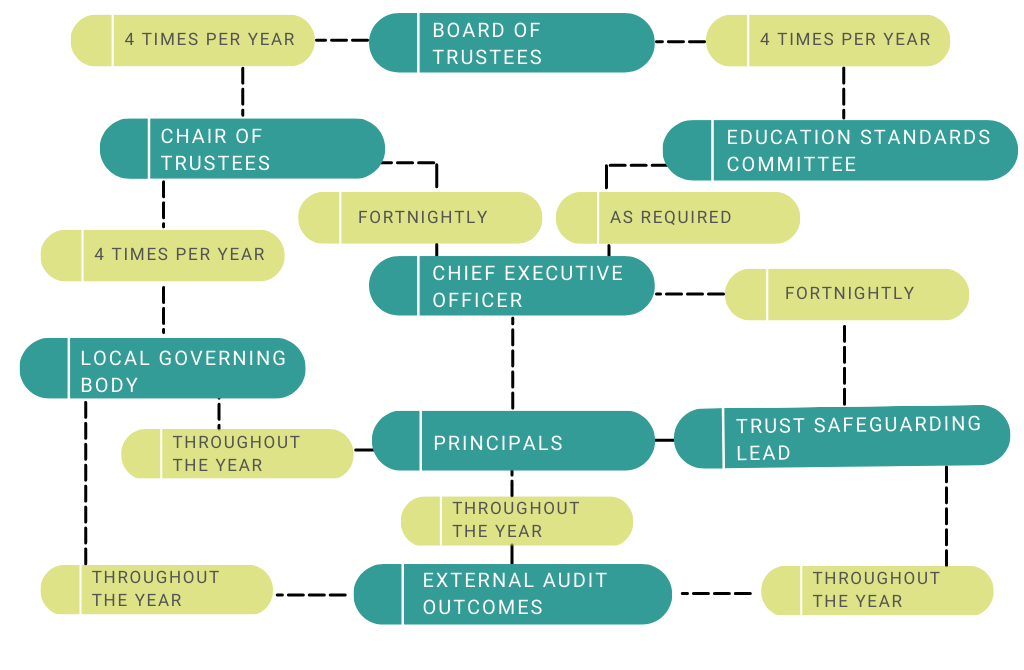Trust Safeguarding Lead (ID 1063)
-
Kim KentTrust Safeguarding Lead
Kim Kent
Kim is the ÐÇ¿Õ´«Ã½ without Limits Academy Trust Safeguarding Lead, she has worked within the diverse community of Leicester for many years and is inspired by both staff and pupils. Prior to her current role, Kim was an Assistant Principal, a member of the SLT, SENCO and DSL at Babington Academy and completed her NSPCC Child Protection Supervision Course upon joining the LwLAT Central Team. Kim's role is essential for making sure that Trust staff have the training and skills to keep our children safe. Whilst the role of safeguarding can be challenging, Kim finds working closely with inspiring people who put children at the heart of what we do to be rewarding. As the Trust Safeguarding Lead, Kim has organised a wide range of specialist safeguarding courses for the Safeguarding Leads across the Trust and takes the opportunity to attend any training which will further the development of her safeguarding knowledge and skills. As well as the Safeguarding Lead for the Trust, Kim is also a Specialist Leader of Education for special educational needs and a Trauma Informed Schools trainer.
Safeguarding Statement of Intent
Given the areas of the City and County that our schools operate in, the management of safeguarding is a significant part of our schools’ work. The Trust employs a Safeguarding Lead centrally who works with all of the schools to ensure that best practice is followed at all times. The role is designed to support and challenge the schools and ensure that all children remain safe whilst in our care. The role itself undertakes a variety of activity, including, but not limited to:
- Policy reviews
- Liaising with the Local Authority
- Serious case support
- ‘In the moment’ helpline support
- Coordination of peer reviews
- Coordination of support from external agencies
- SCR overview (trust wide use of SCR tracker)
- Supervision
- CPOMS monitoring (analysis of trends and resulting trust wide actions)
- Safeguarding CPD
- Best practice reviews and guidance
All of our Trust schools have fully trained Designated Safeguarding Leads along with a significant number of safeguarding trained staff to ensure the consistent application of our safeguarding policies and procedures. In order to ensure board oversight of safeguarding there are a number of communication channels that allow the board to triangulate the school level practice and ensure that they are informed of the cases they need to be aware of. Throughout the year there is a constant cycle of safeguarding CPD delivered across the trust to ensure staff are kept fully up to date with current practice.
The ÐÇ¿Õ´«Ã½ without Limits Academy Trust is committed to safeguarding and promoting the welfare and safety of all children. The Trust expects all staff, volunteers, and visitors to share this commitment. We aim to provide a safe, caring, and positive environment which promotes the social, physical, and moral development of the individual child, and where every child in the Trust feels safe, well cared for, and able to reach their full potential. - LwLAT Safeguarding Lead
Short Term Monitoring and Support
The trust has in place a protocol that informs the Trust Safeguarding Lead of any serious cases / referrals to LADO. This information is fed through to the CEO. The CEO meets regularly with the Principals to complete a risk register and RAG rated review of each of the schools. During these meetings the current position on safeguarding is captured including the lower level incidents. These conversations include number of referrals on CPOMS / type of safeguarding issues dealt with. This informs any additional support the schools may require. The CEO meets with the Chair of Trustees fortnightly and updates on any significant safeguarding issues and safeguarding themes currently being dealt with across the Trust.
Medium Term Monitoring and Support
Each school has a Local governing Body that meets four times a year. The Trust has standardised the schools' reporting template to Local Governing Bodies, which includes a breakdown of information relating to safeguarding issues. The Chair of Trustees meets with the chairs of the Local Governing Bodies 4 times a year to receive formal feedback from the meetings, including feedback on the safeguarding element of the report. This allows the Chair of Trustees to triangulate the fortnightly (short term) flow of information with the medium term information in these meetings.
Long Term Monitoring and Support
The Trust commissions external reviews of its schools throughout the year from a number of partners including Challenge Partners; other local MAT leaders; specialist safeguarding consultants and trained (recently retired) Ofsted inspectors. The Trust also conducts peer reviews once a year where leaders from the Trust schools evaluate each other based on a template derived from the Local Authority Section 175/157 safeguarding audit. The outcomes from these reviews are shared with the CEO and any ‘exceptions / actions required’ by the schools are shared with the Chair of Trustees. Where significant actions are required, this information is shared with the Education Standards Committee, who will monitor the situation across a series of meetings and in turn report back to the board in 4 Board Meetings across the year.
Lines of Communication Summary


